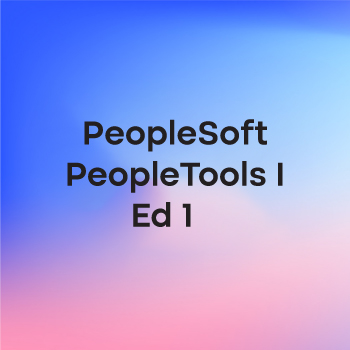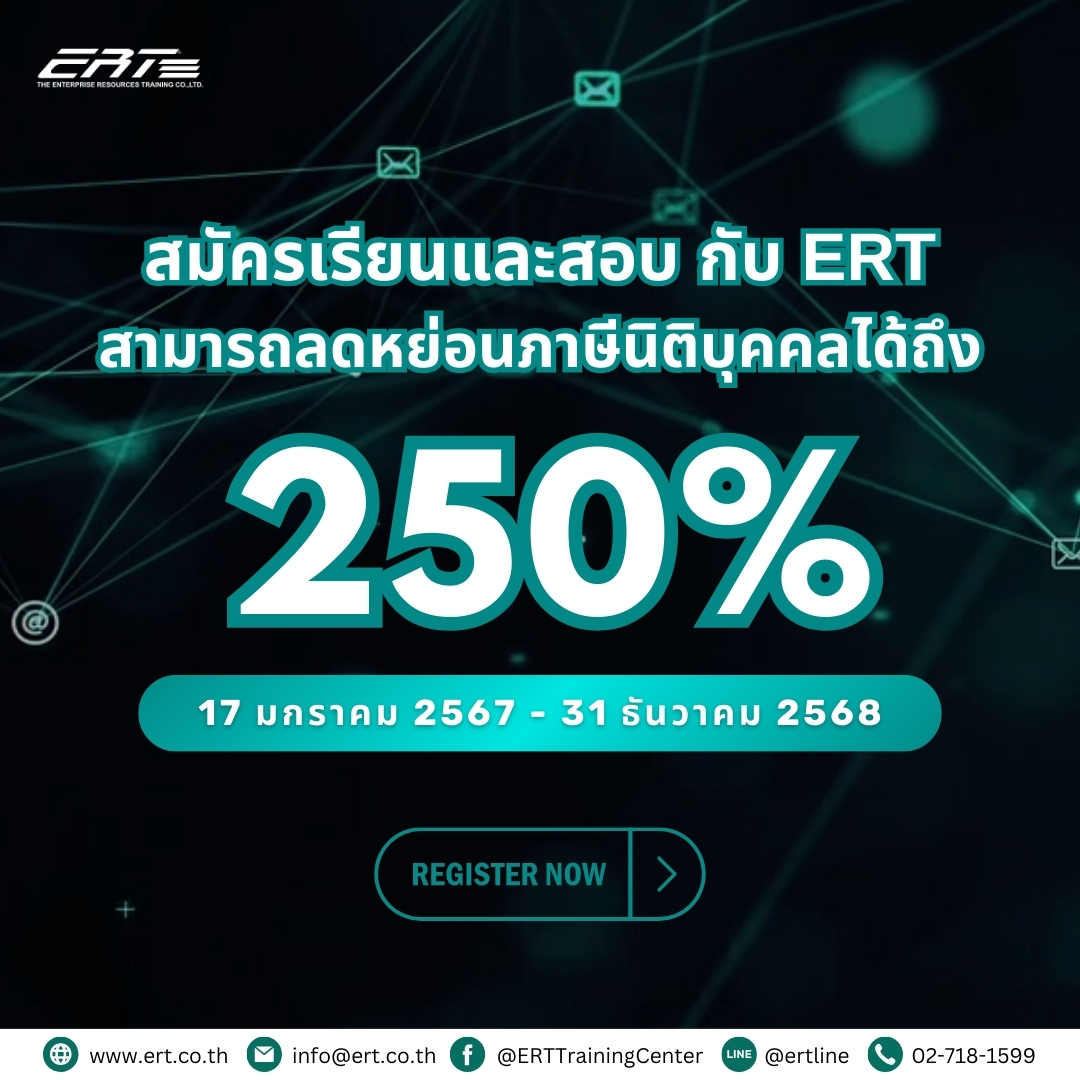PeopleSoft PeopleTools I Ed 1
This PeopleTools training introduces you to the PeopleSoft application development methodology. Dive deep into the PeopleSoft system architecture and the tool set used to develop new applications or customize existing PeopleSoft applications.
STUDENTS WILL LEARN TO
- Describe PeopleSoft application design and the technology behind this process
- Navigate PeopleSoft applications
- Describe the elements of the PeopleSoft Pure Internet Architecture
- Describe PeopleSoft data organization and validation
- Implement the eight steps of PeopleSoft application development
- Organize definitions into projects
- Design and build PeopleSoft applications, including building data structures and creating user interfaces
- Build classic and simple fluid PeopleSoft applications and explain the differences between the two approaches
- Demonstrate competence in PeopleSoft application development methodology

|
Phone
|
Phone
|
|---|---|
|
Product
|
Oracle
|
|
Code
|
D105601GC10
|
|
Duration
|
5 Days
|
|
Price (baht)
|
70,500
|
About the course
COURSE TOPICS
Module 1 : PeopleTools I Course Overview
- PeopleTools I Course Overview
Module 2 : PeopleTools I Technology Overview
- PeopleTools I Technology Overview
Module 3 : Navigating PeopleSoft Applications
- Navigating PeopleSoft Applications
- Navigating with Global Search
- Using Search Pages
- Identifying Definitions
- Finding Information Using PeopleSoft Online Help
- Activity 1: Navigating the PeopleSoft System
- Activity 2: Using Search Pages
- Activity 3: Entering Data
- Activity 4: Finding Information Using PeopleSoft Online Help
Module 4 : Explaining the PeopleSoft Architecture
- Explaining the PeopleSoft Architecture
- Explaining Data Transfers in the PeopleSoft Pure Internet Architecture
- Identifying Requirements for the Development Environment
- Activity 5: Examining PeopleSoft Databases
- Activity 6: Explaining Data Transfers in the PeopleSoft Pure Internet Architecture
Module 5 : Validating Data
- Validating Data
- Using Effective Dating
- Comparing Validation Types
- Activity 7: Using Effective Dating
Module 6 : Using Application Designer to Develop Applications
- Using Application Designer to Develop Applications
- Migrating Definitions between Databases Using Projects
- Activity 8: Organizing Definitions in Projects
- Activity 9: Exporting and Importing a Project File
Module 7 : Designing the Application
- Designing the Application
- Determining Technical Specifications
Module 8 : Defining Fields
- Defining Fields
- Identifying Field Definition Types and Properties
- Assigning Translate Values
- Activity 10: Creating Field Definitions for the Course Application
- Activity 11: Creating Translate Values
- Activity 12: Creating Fields for the Course Materials Application
Module 9 : Creating Record Definitions
- Creating Record Definitions
- Configuring Record Field Use Properties (Part 1)
- Configuring Record Field Use Properties (Part 2)
- Creating Record Definitions
- Activity 13: Configuring Record Field Properties
- Activity 14: Creating a Record Definition
- Activity 15: Creating the T1_COURSE_MATL Record Definition
Module 10 : Building SQL Tables
- Building SQL Tables
- Building Application Data Tables
- Viewing Table Indexes
- Activity 16: Analyzing PeopleSoft Tables
- Activity 17: Building Application Data Tables
- Activity 18: Viewing Indexes in a Table
- Activity 19: Building the PS_T1_COURSE_MATL Table
Module 11 : Creating Page Definitions
- Creating Page Definitions
- Identifying Page and Page Control Properties (Part 1)
- Identifying Page and Page Control Properties (Part 2)
- Adding Page Controls (Continued)
- Creating Page Definitions (Continued)
- Finalizing Page Design and Layout
- Activity 20: Creating Page Definitions
- Activity 21: Implementing Scroll Areas
- Activity 22: Implementing Scroll Areas and Grids
- Activity 23: Building the Course Materials Page
Module 12 : Defining Components
- Defining Components
- Defining Properties for Classic Components (continued)
- Activity 24: Building a Component Definition
- Activity 25: Building the T1_COURSE_MATL Component
Module 13 : Registering Components
- Registering Components
- Navigating the Portal Registry
- Registering Components
- Activity 26: Identifying PeopleSoft Security Basics
- Activity 27: Navigating the Portal Registry
- Activity 28: Registering a Component
- Activity 29: Registering the T1_COURSE_MATL Component
Module 14 : Testing Applications
- Testing Applications (Part 1)
- Testing Applications (Part 2)
- Troubleshooting Common Issues
- Activity 30: Creating and Analyzing Test Plans
- Activity 31: Testing the General Information Component
- Activity 32: Testing the Materials Information Component
Module 15 : Editing the Portal Registry Structure
- Editing the Portal Registry Structure
- Creating Folders
- Activity 34: Creating Folders in the Portal Registry
- Activity 35: Moving Folders or Content References
- Activity 36: Deleting Folders in the Portal Registry
- Activity 37: Creating the T1_COURSE_SETUP Folder
Module 16 : Creating Menu Definitions
- Creating Menu Definitions
- Activity 38: Editing Menu Item Labels
- Activity 39: Creating a Menu Definition
Module 17 : Analyzing the Impact of Design Changes
- Analyzing the Impact of Design Changes
- Activity 40: Determining Relationships Among Definitions
- Activity 41: Synchronizing Record Definitions and Database Tables
Module 18 : Building Classic Applications
- Building Classic Applications
- Activity 42: Creating Course Sessions Application (Part 01)
- Activity 42: Creating Course Sessions Application (Part 02)
- Activity 43: Creating Student Enrollment Application
- Activity 44: Creating the Course Databases Application (Optional)
- Activity 45: Creating the Course Database Assignment Application (Optional)
Module 19 : Understanding the Fluid User Interface
- Understanding the Fluid User Interface
Module 20 : Working with Fluid Homepages
- Working with Fluid Homepages
- Activity 46: Personalizing Fluid Homepages
Module 21 : Creating Fluid Pages
- Creating Fluid Pages
- Working with the Elements of Fluid Page Design (continued)
- Working with Additional Page Controls
- Activity 47: Creating Fluid Pages
Module 22 : Working with Fluid Components
- Working with Fluid Components
- Registering Fluid Components (continued)
- Activity 48: Creating and Registering a Fluid Component
Module 23 : Testing Fluid Applications
- Testing Fluid Applications
- Activity 49: Testing a Fluid Application
Module 24 : Using Delivered CSS
- Using Delivered CSS
- Incorporating Custom Style Sheets
- Activity 50: Modifying the Installation Data Page Using CSS
Module 25 : PeopleTools I Course Review
- PeopleTools I Course Review
Register for Training
Schedule
| Start Date | End Date | Duration (days) | Price | Register | Course | Code | Product |
|---|

